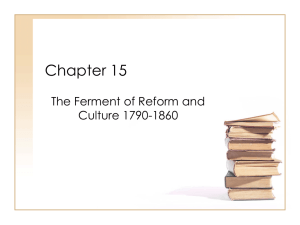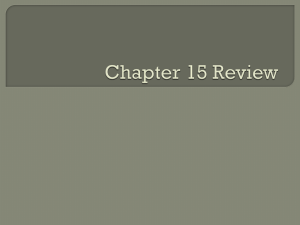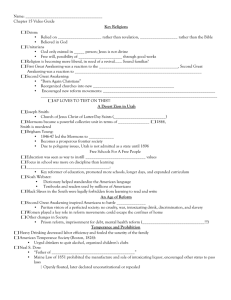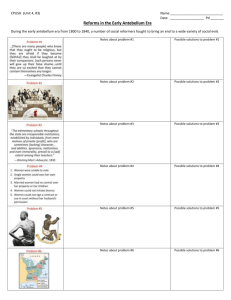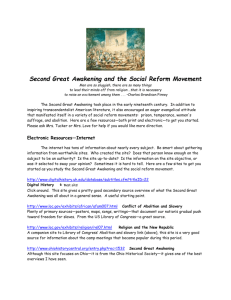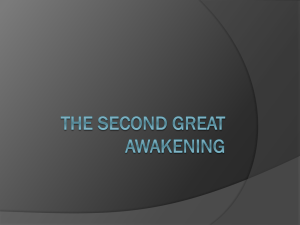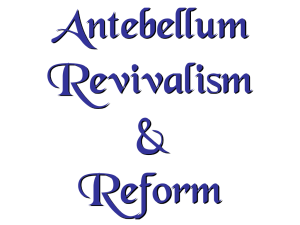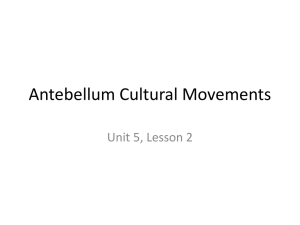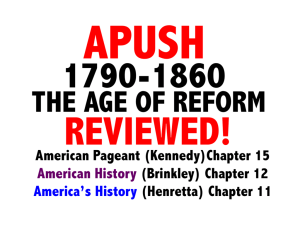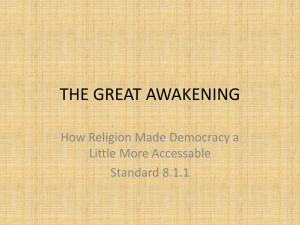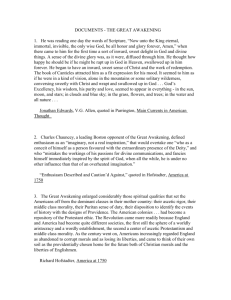Chapter 15 - Henry County Public Schools
advertisement
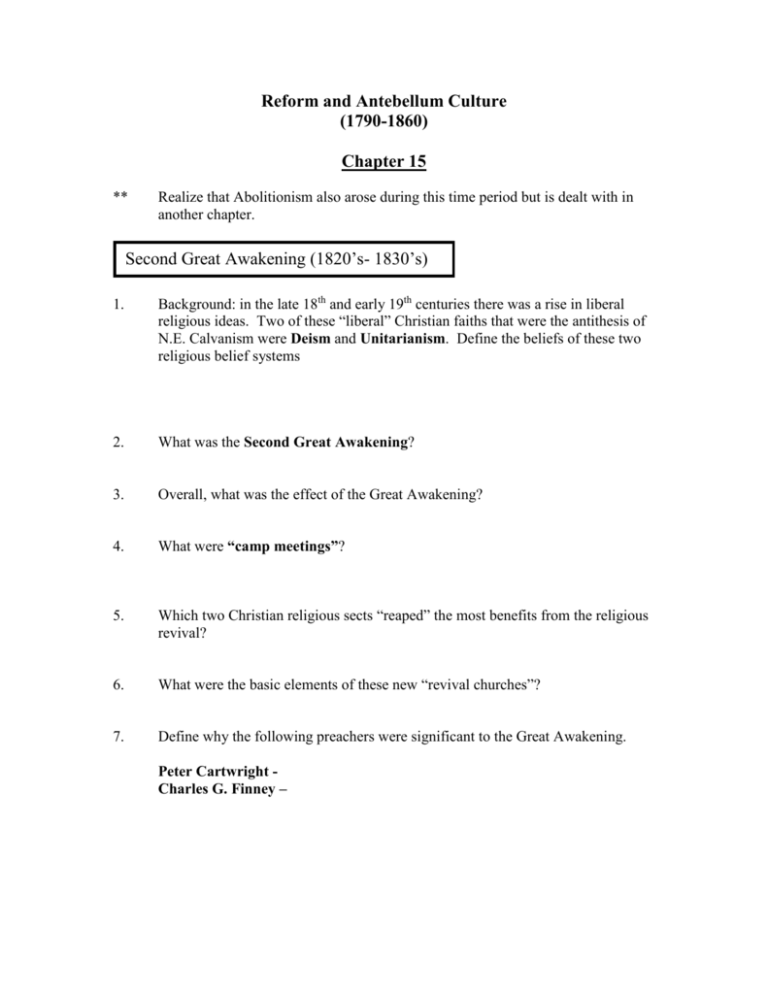
Reform and Antebellum Culture (1790-1860) Chapter 15 ** Realize that Abolitionism also arose during this time period but is dealt with in another chapter. Second Great Awakening (1820’s- 1830’s) 1. Background: in the late 18th and early 19th centuries there was a rise in liberal religious ideas. Two of these “liberal” Christian faiths that were the antithesis of N.E. Calvanism were Deism and Unitarianism. Define the beliefs of these two religious belief systems 2. What was the Second Great Awakening? 3. Overall, what was the effect of the Great Awakening? 4. What were “camp meetings”? 5. Which two Christian religious sects “reaped” the most benefits from the religious revival? 6. What were the basic elements of these new “revival churches”? 7. Define why the following preachers were significant to the Great Awakening. Peter Cartwright Charles G. Finney – NEW DENOMINATIONS 8. What was the “burned over district”? 9. Millerites (Adventists) – what did they believe? 10. Define the regional and economic divisions that were deepened by the Second Great Awakening. 11. Mormons (Church of Jesus Christ of Latter-Day Saints) Who was Joseph Smith? Who was Brigham Young? Why were the Mormons persecuted and reviled by other Americans? PUBLIC EDUCATION 12. Why were “ragged schools” not highly supported in the antebellum period? (Which region of the country had always supported primary education?) 13. What two factors caused the “public school” movement of the 19th century to gain momentum? 14. What was the typical primary school curriculum? What were the weaknesses in these early American One-room school houses? 15. Define the contributions of Horace Mann and Noah Webster and William McGuffey. 16. Assess (with historically accurate statements) how great the change was in public education by the time of the Civil War (1860). 17. Women’s Education - Define the importance of the following institutions and people. Emma Willard – Oberlin College – Mary Lyon - 18. Women’s Education –Delineate the limited progress that women made in the area of education by the time of the Civil War and explain why so little progress had been made. 19. Using page328 and 329, characterize in a paragraph or two the dreams of reformers in the social realm, the motivations they had and the limits of their “reform-mindedness” (include Laud, Dix and others) 20. Temperance Movement – Define the following – T.S. Arthur’s Ten Nights in a Barroom and What I Saw There (1854) Neal S. Dow Maine Law of 1851 – 21. What is the difference between temperance and “teetotalism”? How effective were they in stopping drinking? Women’s Suffrage Movement – 1848 22. Define the elements that compose the “Cult of Domesticity” 23. What were the legal, political and economic barriers that women experienced ? 24. Define the significances of the following women: Lucretia Mott – Elizabeth Cady Stanton – Susan B. Anthony Elizabeth Blackwell – Margaret Fuller The Grimke sisters – Lucy Stone – Amelia Bloomer – Woman’s Rights Convention (1848) (aka. Seneca Falls Convention) Declaration of Sentiments - Utopian Movements 24. Define the following people and movements New Harmony (Robert Owen) – 1824 Brook Farm – Oneida Community – Shakers (Mother Ann Lee) 25. What do the utopian movements have in common? 26. American Artists - Define the significant contributions of the following– John Audobon – Gilbert Stuart – (1755-1828) Charles Wilson Peale – John Trumbull – The Hudson River School - 27. American Writers – List and describe the significant works of the following: Knickerbocker Group – Washington Irving – James Fenimore Cooper – William Cullen Bryant – Transcendentalists – 28.Define Transcendentalist beliefs 29. Characterize the works of the following writers: Ralph Waldo Emerson – Henry David Thoreau – Walt Whitman – American Literary “Lights” Henry Wadworth Longfellow – John Greenleaf Whittier – James Russell Lowell – Dr. Oliver Wendell Holmes – Emily Dickinson Edgar Allen Poe – Nathaniel Hawthorne – Herman Melville George Bancroft – Francis Parkman – Bonus: What were Lyceums?
